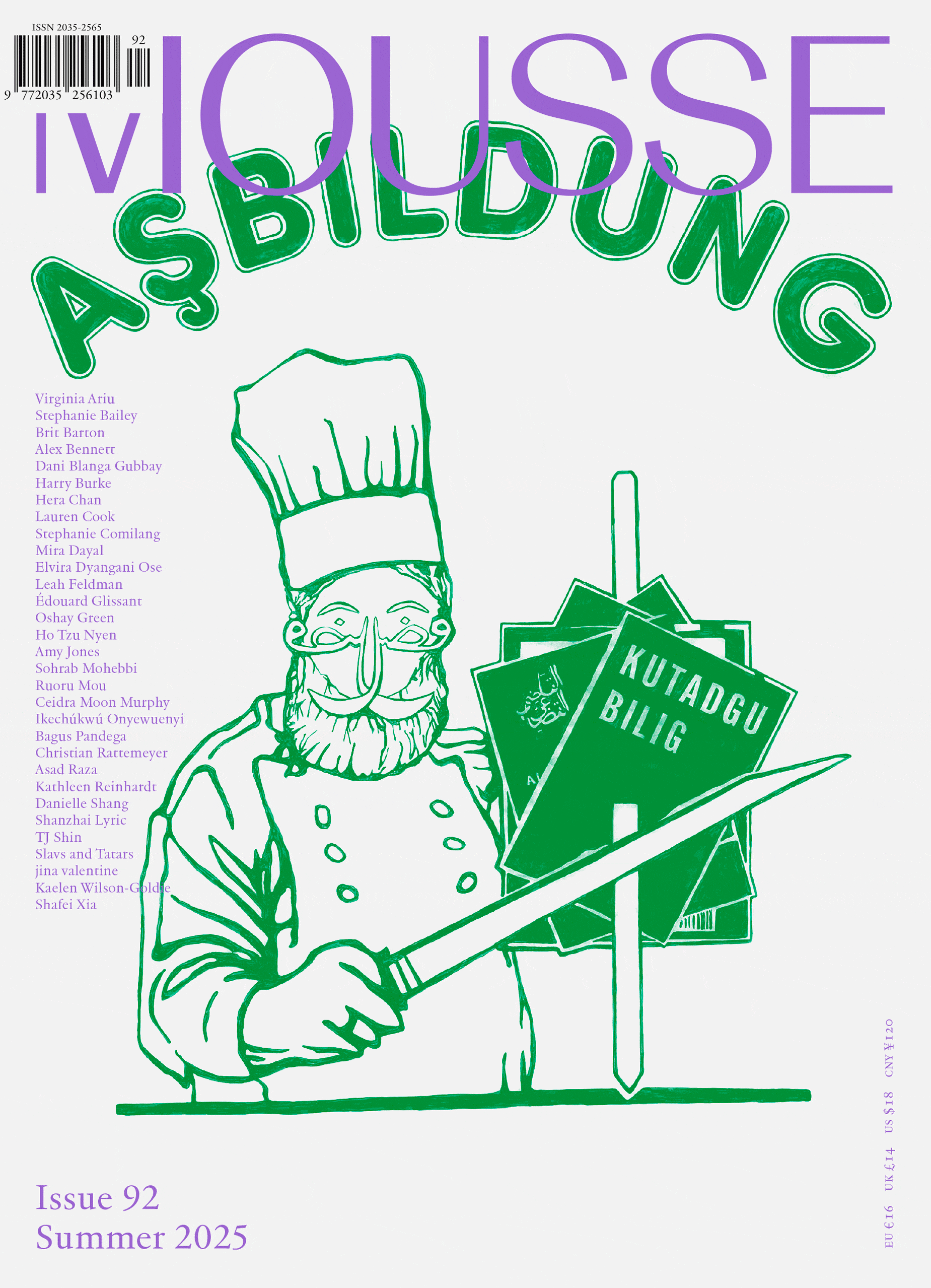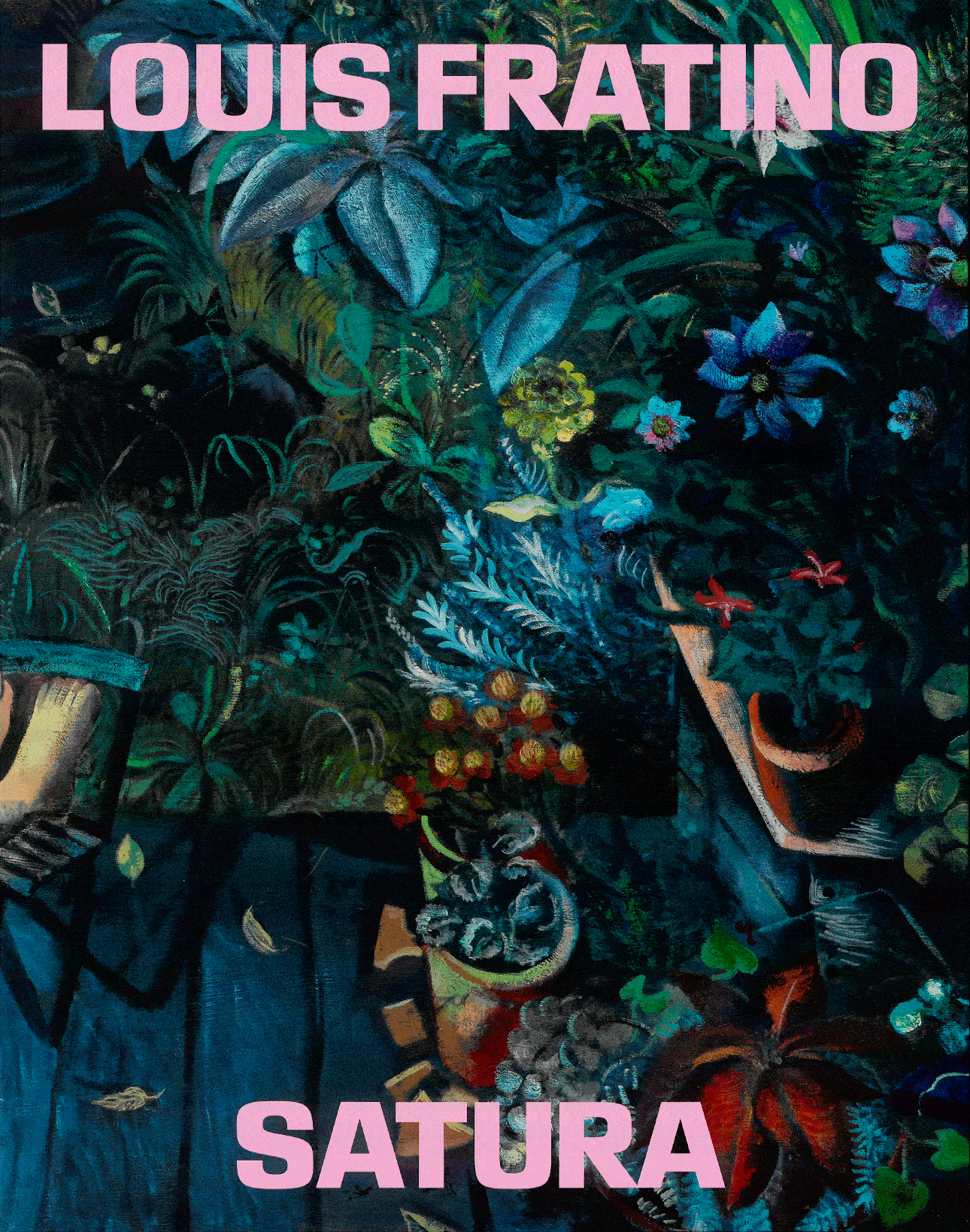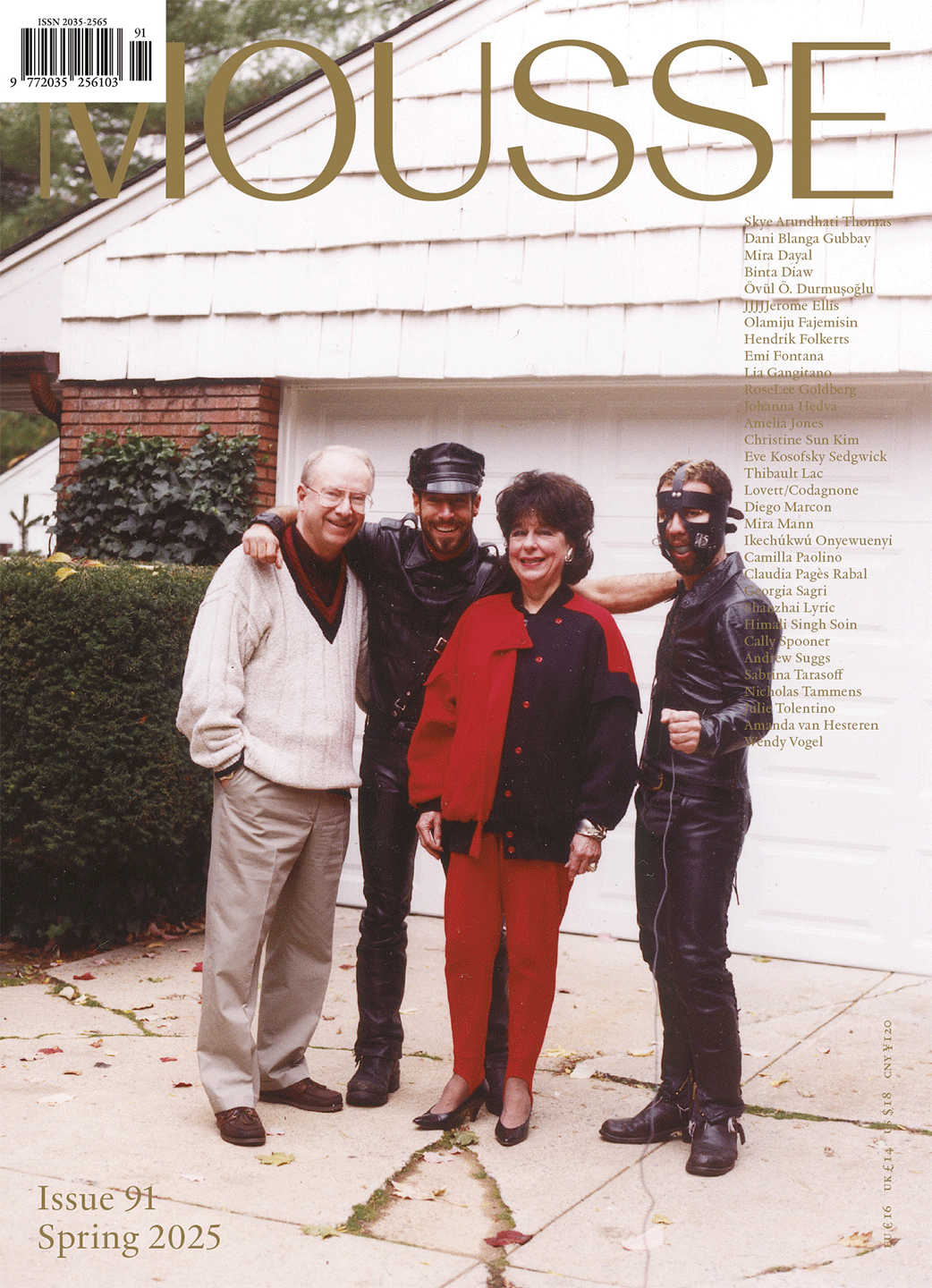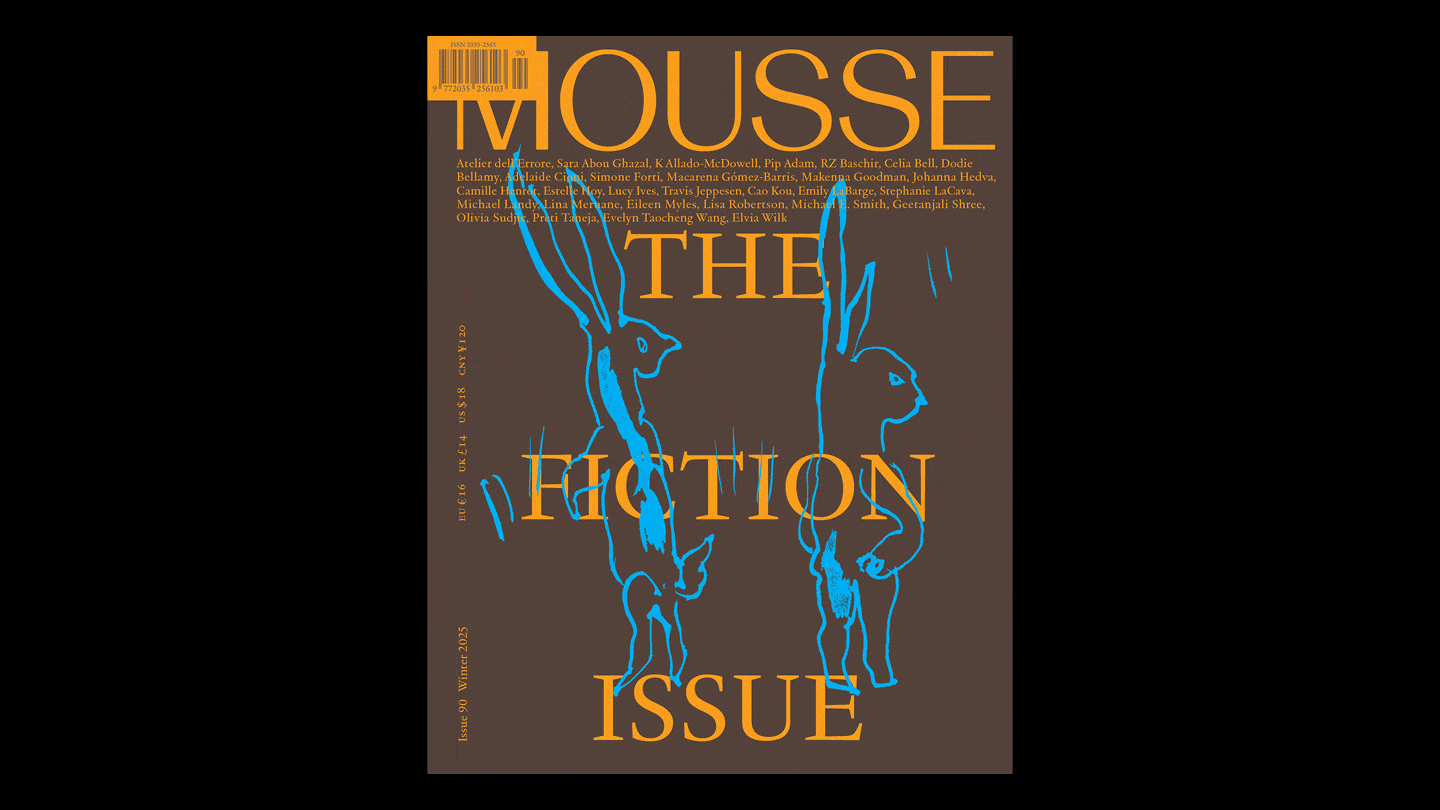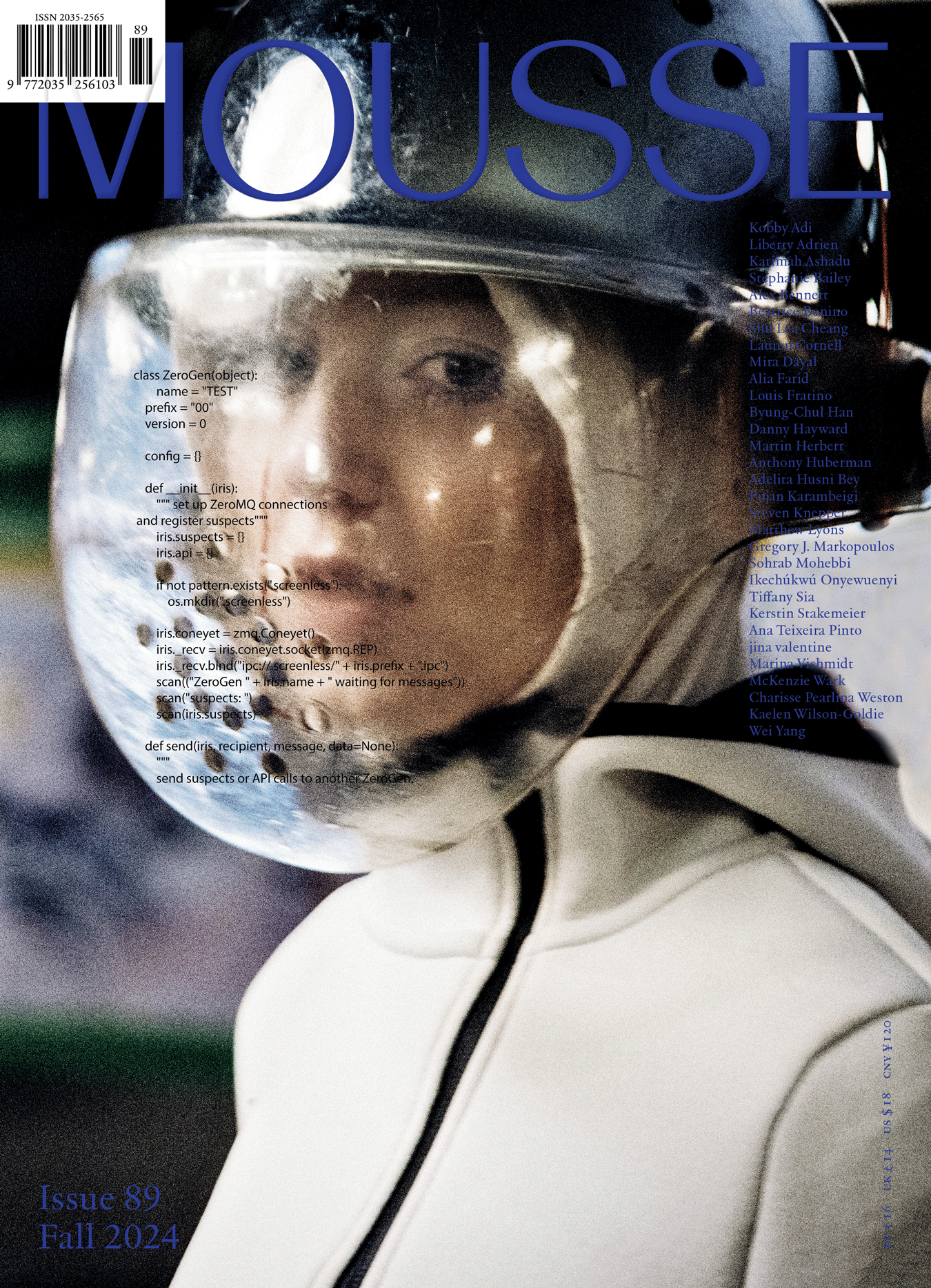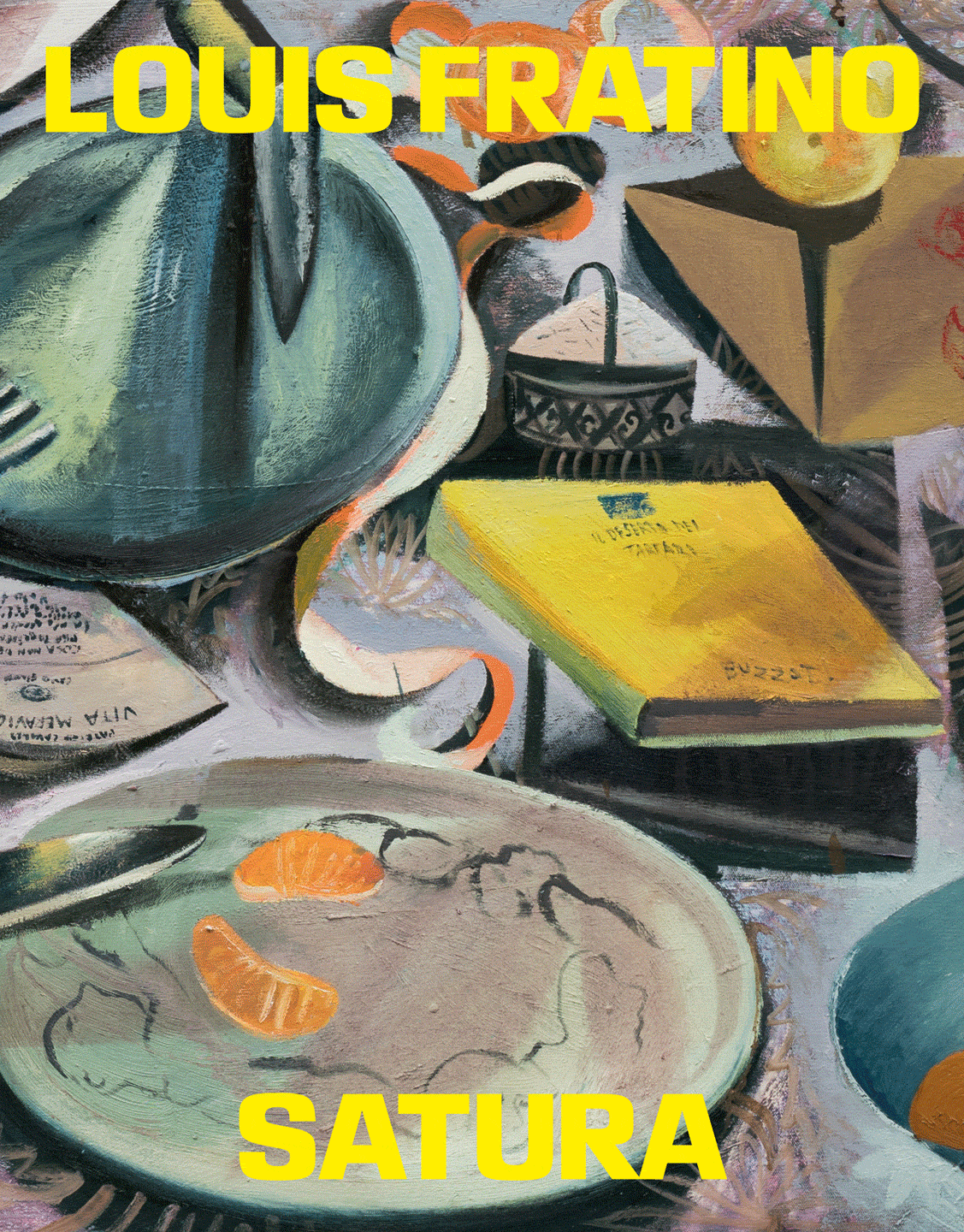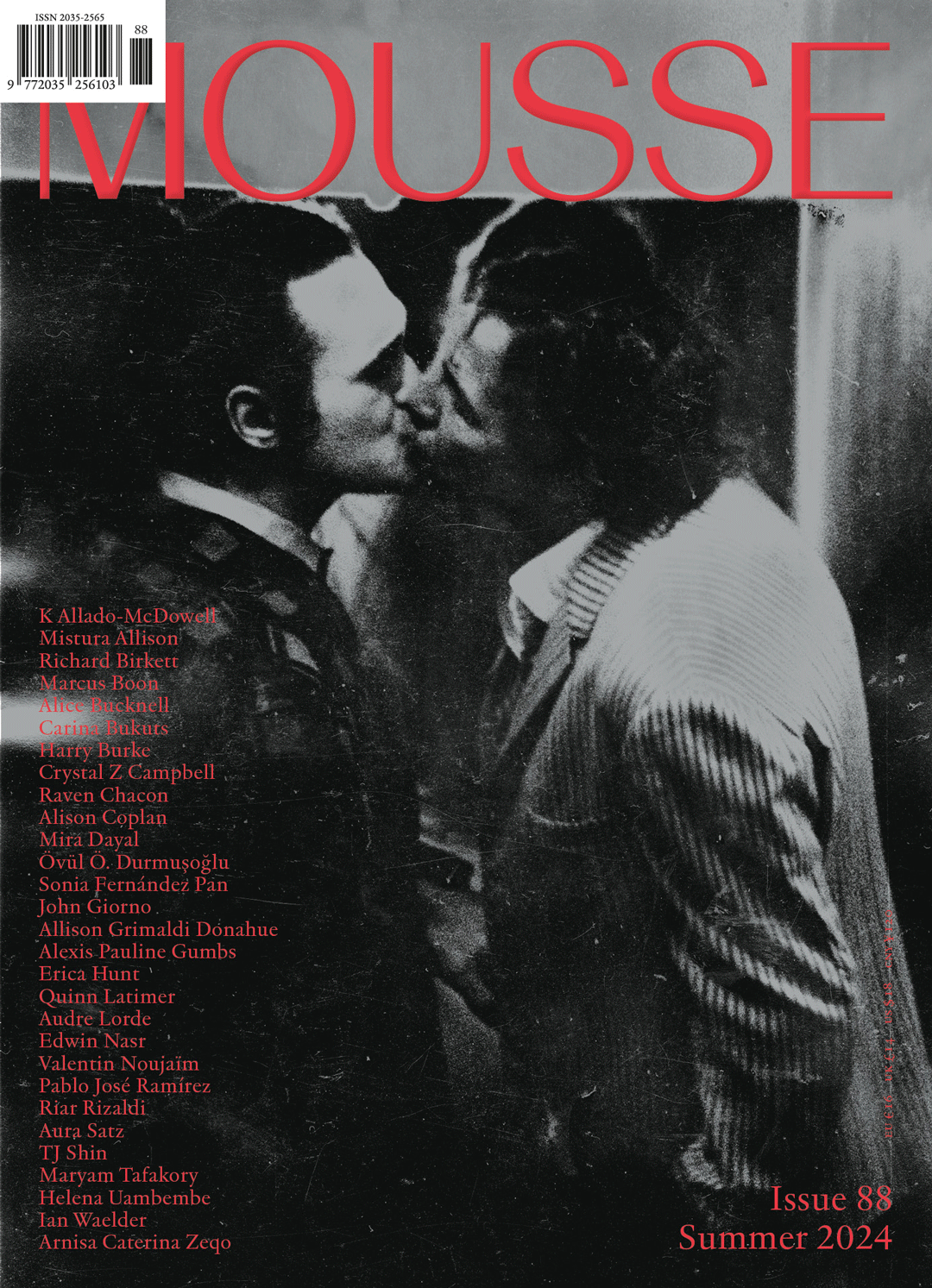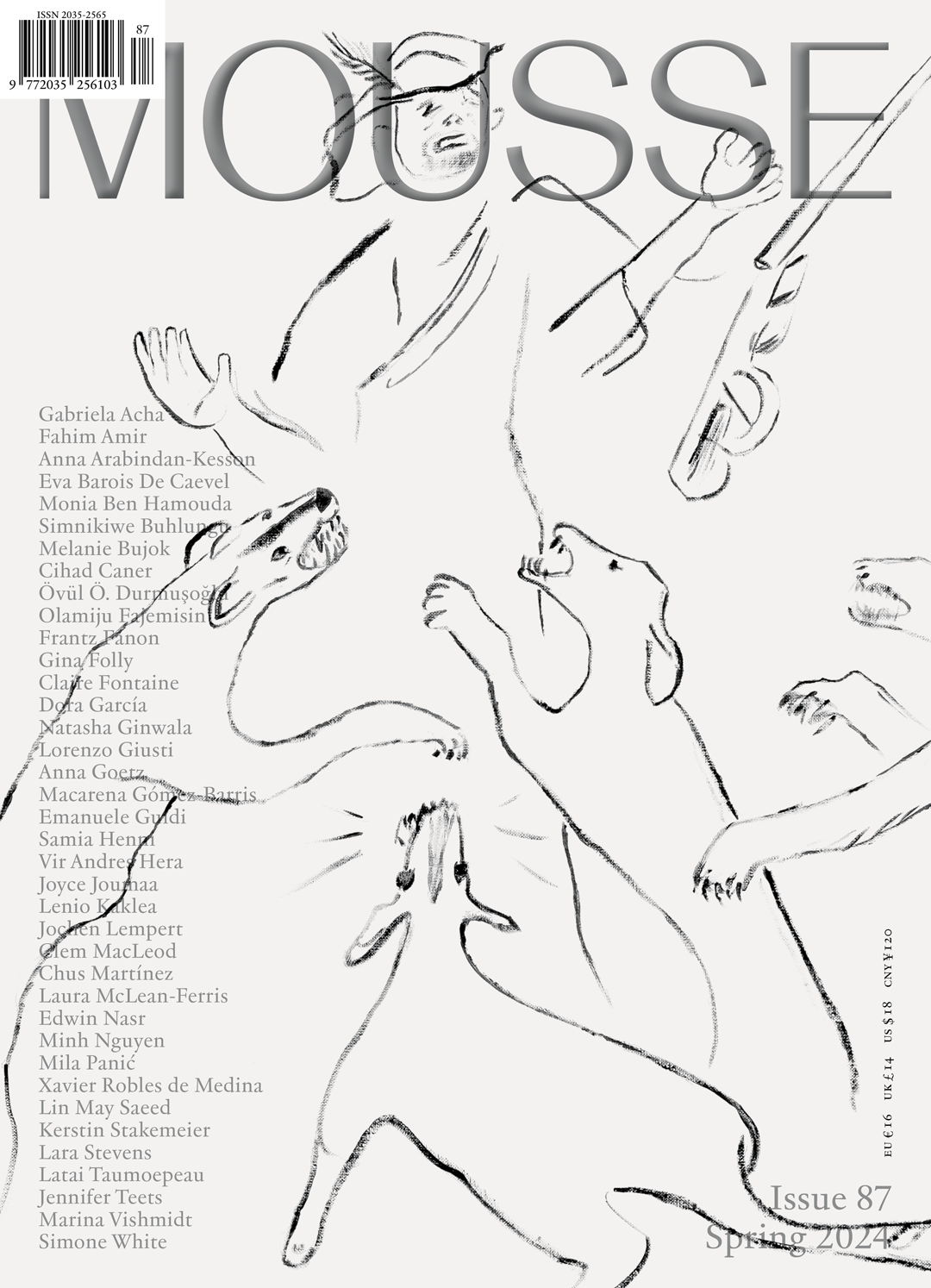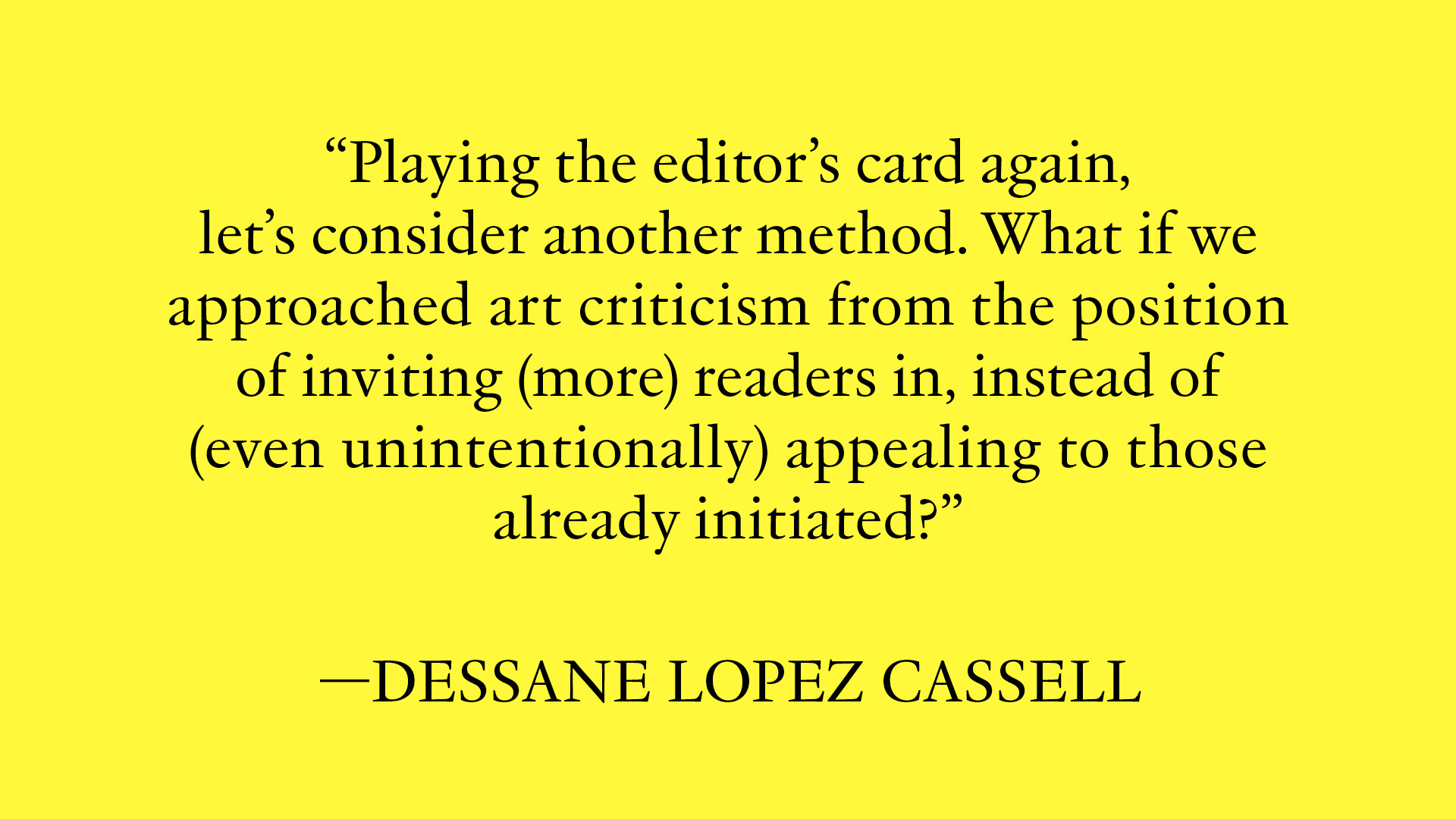Mousse #92–Summer 2025
Get Mousse #92 or subscribe
Join our newsletter
Dear readers,
Regions surface often in this issue—across arts, tales, and gatherings of individuals and meanings—as a possibility to bypass the borders of nation-states and the meta-geographies of colonial modernity.
Survey: Slavs and Tatars
Being One with Many, Being One through Many
“Languages are the closest thing we have to superpowers,” says Payam Sharifi of Slavs and Tatars, here in conversation with Leah Feldman and Kathleen Reinhardt. They examine how symbols and vernacular aesthetics can offer alternative models of belonging outside imperialist paradigms.
From Monobrows to Winter Melons: On the Evolution of Slavs and Tatars
“What Slavs and Tatars imagine is a place open to reading and thinking and resting, where regions can be expansive, and historical connections (and conflicts, and repressions) can resurface without blowing up in our faces.” Kaelen Wilson-Goldie on the collective’s spectrums of possibility across two decades.
Monograph: The Voice of Vessels
“Each of her moving-image works begins with a search and a conversation, and often ends with a song.” Hera Chan on Stephanie Comilang’s documentarian instinct and intuitive connection with her subjects, speaking to complicated—and complicit—histories of exchange.
Monograph: All Possible Stories
Stephanie Bailey contemplates the melancholy reverberations in Ho Tzu Nyen’s video works and multimedia performances, in which pop or political reality merges with metaphor, and algorithmic editing links elastic fragments in unexpected ways.
Opinions: Drifting into the Atmospheric
Exploring art’s potential to desubjugate, Sohrab Mohebbi ponders a tendency in today’s discourse: “We might understand the atmospheric as a form of spatial practice that creates micro-localities where artists and audiences alike can dissolve and dislodge.”
Fiction: I always used to say that the pursuit of beauty isn’t possible. It is usually the search for something else.
“I started living in a jar recently. The same jar that a child puts a lid on and pokes holes in for air.” Lauren Cook, author of Sex Goblin (2024), contributes nine newly commissioned note-like fiction pieces.
Thinkers: Édouard Glissant, Waves of Relation
Through personal recollections, Asad Raza considers how the work of Martinican philosopher Édouard Glissant took on poetic dimensions as he explored how much could be unpacked from a rock, a tree, waves, an island, or speaking to a taxi driver.
Criticism: Collective Voices
For the close of guest editor Mira Dayal’s cycle, she is joined in conversation by artists Shanzhai Lyric, TJ Shin, and jina valentine—whom she invited to reflect on art criticism over the past year—to discuss the paces of language and the borders that have shaped their writing.
Curators: Temporary Communities, Four Points on Radically Public Institutions
Elvira Dyangani Ose reviews her theoretical journey, from “individual agency in an entangled world” to “a possible museum” as “a public right, a public good.”
Notes on Spitting: Part 2, A Signature Truer Than the Name
“If, etymologically, choreography is a form of writing (higher organs), this is a counter-choreography spat up from below—throwing away control by the head in favor of a surge of lust rising from the feet,” Dani Blanga Gubbay writes in the second chapter of his column.
Tidbits: Ruoru Mou by Amy Jones; Virginia Ariu by Brit Barton; Bagus Pandega by Harry Burke; Ceidra Moon Murphy by Alex Bennett; Oshay Green by Ikechúkwú Onyewuenyi
Visual: Seven Emotions and Six Desires
“That’s where my paintings live: not in a tidy, fixed space, but in frenzied flux. Women look back to confront, animals stay close to witness, and qing [emotion] moves through everything—raw, uncertain, and unbound.” Shafei Xia in conversation with Danielle Shang.
Guest Design: Lamm & Kirch
The uncoated paper section and the graphic cover of Mousse #92 are conceived by the graphic design studio Lamm & Kirch. By dispersing text, disrupting hierarchy, and inviting lateral movement, these pages assert that meaning emerges not from sequence, but from encounter.
